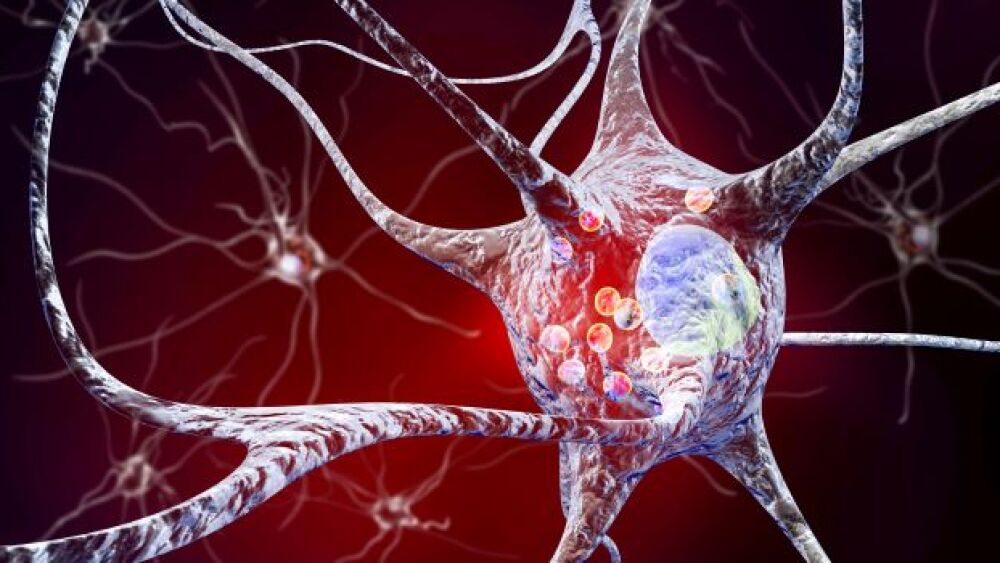Every week there are numerous scientific studies published. Here’s a look at some of the more interesting ones.
Every week there are numerous scientific studies published. Here’s a look at some of the more interesting ones.
5 Genes Associated with Lewy Body Dementia, with Implications for Alzheimer’s and Parkinson’s
Research conducted by the NIH’s National Institute of Neurological Disorders and Stroke (NINDS) identified five genes that appear to play a critical role in whether a person will suffer from Lewy body dementia, a type of dementia where the brain accumulates clumps of abnormal protein deposits known as Lewy bodies. The data also supported Lewy body dementia’s connections to Parkinson’s disease and connections to Alzheimer’s disease. The research was published in the journal Nature Genetics.
“Lewy body dementia is a devastating brain disorder for which we have no effective treatments,” said Sonja Scholz, investigator at the NIH’s NINDS and senior author of the study. “Patients often appear to suffer the worst of both Alzheimer’s and Parkinson’s diseases. Our results support the idea that this may be because Lewy body dementia is caused by a spectrum of problems that can be seen in both disorders. We hope that these results will act as a blueprint for understanding the disease and developing new treatments.”
They compared the chromosomal DNA sequences of 2,981 Lewy body dementia patients with 4,931 healthy, age-matched controls. The samples were from participants of European ancestry at 44 sites, 17 in Europe and 27 across North America. At first, they found that the five genes’ sequences from the Lewy body dementia patients were often different from the controls. Two of those genes, BIN1 and TMEM175, had not been associated with the disease before. The other three genes, SNCA, APOE and GBA have all been associated with Alzheimer’s and Parkinson’s diseases. They also identified differences in the same five genes compared to the DNA sequences of another 970 Lewy body dementia patients with a new set of 8,928 control subjects, which confirmed their earlier results.
“Although Alzheimer’s and Parkinson’s disease are molecularly and clinically very different disorders, our results support the idea that the problems that cause those diseases may also happen in Lewy body dementia,” said Scholz.
Biological Mechanisms Associated with Late-in-Life Muscle Weakness
Researchers out of the University of Exeter conducted largescale genetic analysis of 250,000 people over the age of 60 and evaluated handgrip strength, using measures of loss of muscle function. Sarcopenia occurs in about 10% of people over the age of 50. There are a lot of reasons for that, but they were looking for specific genetic markers, and they did. They identified 15 areas of the genome associated with muscle weakness, including 12 that had not been associated previously with continuous measures of grip strength. In addition to finding that the genomic regions were close to those associated with musculo-skeletal systems and the immune system, they also found loci associated with metabolic diseases such as type 2 diabetes and auto-immune conditions like osteoarthritis and rheumatoid arthritis.
The Origins of Cataracts
Investigators at the Technical University of Munich (TUM) identified the composition of the protein solution that leads to cataracts of the eye. The cells in the lens of the eye are made up of a highly concentrated protein solution that is typically clear. But when the protein gets out of balance, it gets cloudy as they clump together. This is cataracts. There may be different causes for the clouding. The proteins in the lens are formed in the embryo and are never replaced, so damage can accumulate, which is why it is mostly a disease of aging. But some people have a genetic predisposition to cataracts, where the proteins mutate. In their research in mice, they found that instead of mutated proteins clumping together, they were eliminated immediately, but the normal proteins clumped as a result of a loss of balance between various proteins. When one of the components is missing, the remaining proteins interact and form clumps.
Achilles Tendon Variations in Shape Affect Injury Susceptibility
For thousands of years, human beings have been aware of the Achilles tendon’s susceptibility to injury—hence its name, after the Greek demigod who was defeated by an arrow to his heel. Recent research out of the UCL Institute of Orthopaedics and Musculoskeletal Science, London, U.K., found that the individual variation in the shape and structure of the tendon may influence the susceptibility to injury later in life—no guarantees about getting shot by an arrow. They found that the ability of sub-tendons to slide decrease with age, which may account for the increased Achilles tendon injuries in later life. But by using computer models of imaging of five Achilles tendons, they found that this sliding was subject to individual sub-tendon morphology.
Astrocytes in the Brain May be Associated with Stuttering
Astrocytes are star-shaped cells in the brain that are actively involved in brain function, including biochemical support of endothelial cells, providing nutrients to the nervous system, maintaining extracellular ion balance, and repairing the brain and spinal cord after infection and traumatic injuries. University of California, Riverside (UCR) researchers published research suggesting that astrocytes may play an important role in stuttering. They published the research in the journal Frontiers in Neuroscience.
“Our study suggests that treatment with the medication risperidone leads to increased activity of the striatum in persons who stutter,” said Gerald A. Maguire, professor and chair of the Department of Psychiatry and Neuroscience at the UCR School of Medicine, and study lead. “The mechanism of risperidone’s activity in stuttering, in part, appears to involve increased metabolism—or activity—of astrocytes in the striatum.”
Stuttering is associated with high levels of dopamine, a neurotransmitter. Risperidone’s method of function is by blocking the brain receptors dopamine acts on, which prevents excessive dopamine activity. Risperidone is typically prescribed for schizophrenia and bipolar disorder.
Coauthor Shahriar SheikhBahaei, an independent research scholar at the National Institutes of Health’s National Institute of Neurological Disorders and Stroke, said, “We do not know the exact mechanism for how risperidone activates astrocytes in the striatum. What we know is that it activates astrocytes. The astrocytes then release a signaling molecule that affects neurons in the striatum by blocking their dopamine receptors. In our future work, we would like to find this signaling molecule and better understand the exact role astrocytes play in stuttering, which, in turn, could help us design drugs that target astrocytes.”





